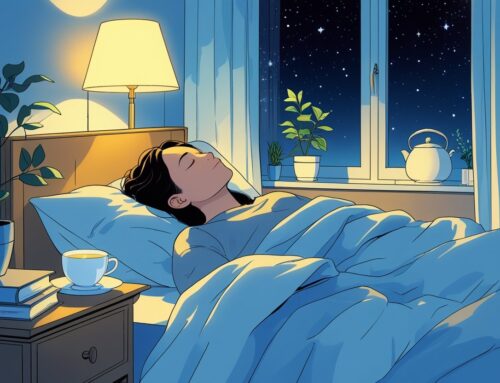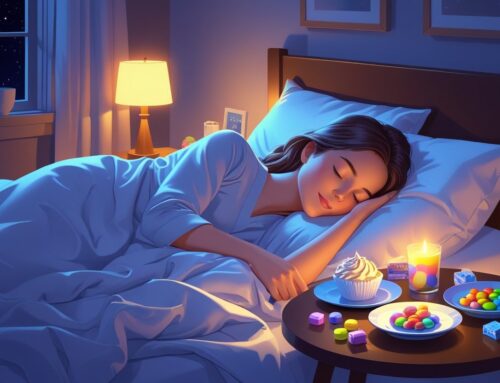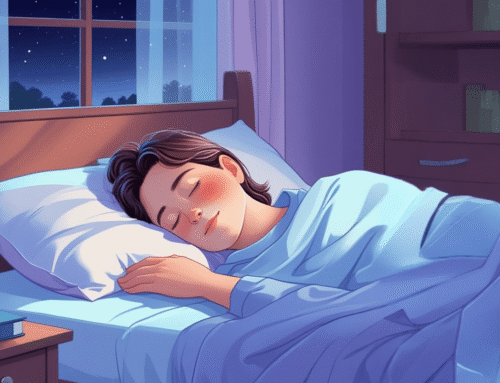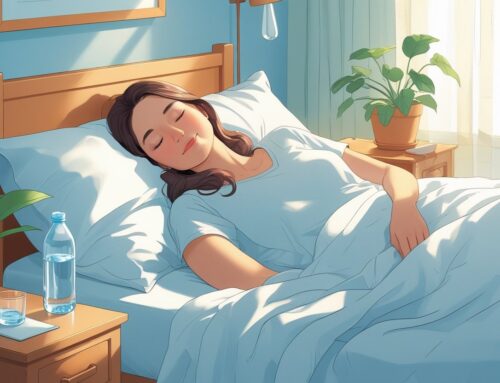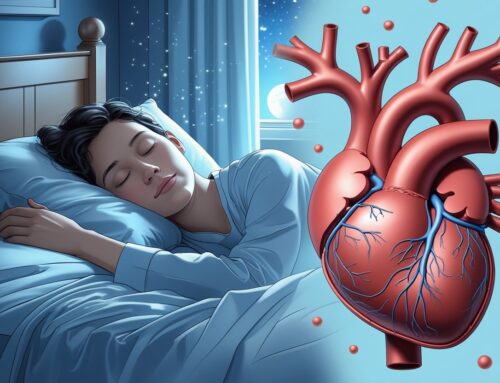Many people have difficulty falling asleep or staying asleep, and some choose acupuncture as a natural way to improve their rest. Acupuncture helps enhance sleep quality by stimulating specific points on the body that promote relaxation and calmness. This technique influences the body’s chemistry, which may reduce stress and relieve pain that disrupts sleep.
Acupuncture is a safe and drug-free alternative for anyone seeking options beyond medication. It may also improve sleep by addressing issues like anxiety or chronic pain that contribute to insomnia. Knowing which points to target and understanding how acupuncture affects the body can provide meaningful relief for sleep troubles.
Key Takeaways
- Acupuncture targets body points to improve relaxation and sleep quality.
- It provides a drug-free way to manage factors that affect sleep.
- Combining acupuncture with other healthy habits can result in better rest.
- Acupuncture helps relax the body’s internal systems while a supportive mattress alleviates pressure points that work together to enhance overall sleep quality.
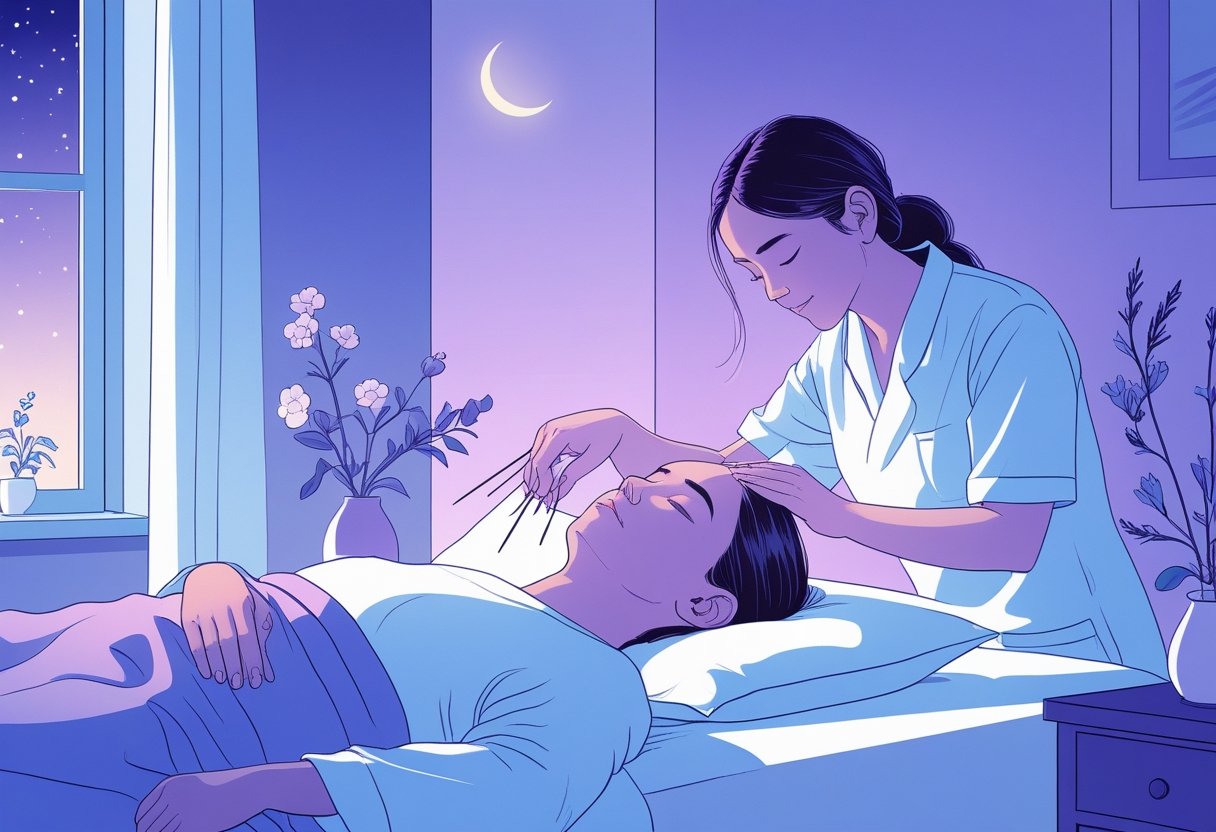
Understanding Sleep and Insomnia
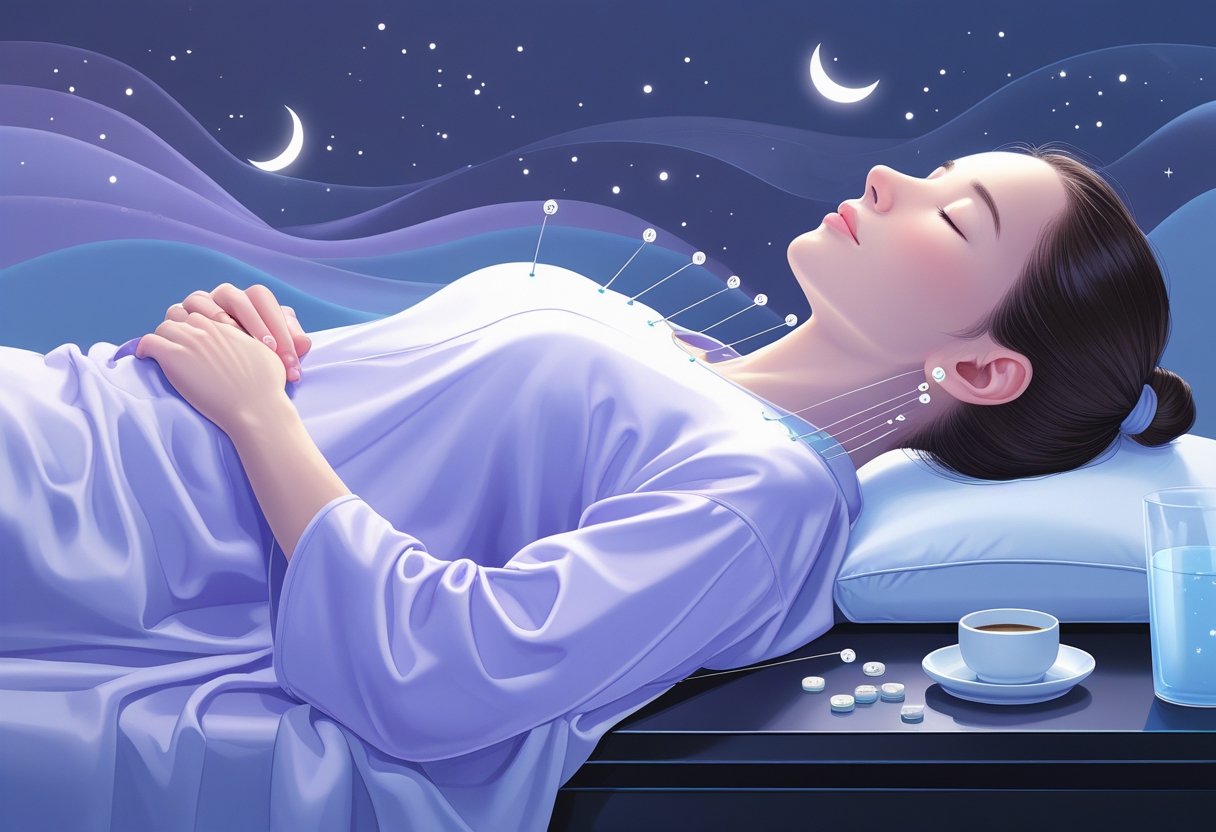
Sleep is a vital process that influences physical health, mental clarity, and emotional balance. Many people struggle when normal sleep patterns become disrupted. Understanding what sleep entails, common disorders, and especially insomnia clarifies why treatments like acupuncture focus on certain areas of the body.
What Is Sleep?
Sleep represents a natural state in which the body rests while the brain processes information. It consists of several stages, including light sleep, deep sleep, and REM (rapid eye movement) sleep. Each stage serves a unique function in restoring energy, repairing cells, and supporting memory.
A healthy adult generally requires 7 to 9 hours of sleep each night. Interruptions in this cycle cause the body to struggle with essential functions such as healing and maintaining immune responses. Both the quality and quantity of sleep prove important.
Common Sleep Disorders
Sleep disorders take various forms but typically result in trouble falling asleep, staying asleep, or feeling refreshed. Some common types include:
- Sleep apnea: Breathing stops repeatedly during sleep.
- Restless leg syndrome: An uncontrollable urge to move the legs.
- Narcolepsy: Sudden and uncontrollable sleep attacks.
- Circadian rhythm disorders: Disruptions in the natural sleep-wake schedule.
Each disorder impacts sleep differently but can lead to daytime fatigue, mood changes, and poor concentration. Proper identification helps direct effective treatment.
The Role of Insomnia
Insomnia ranks as the most common sleep disorder. It causes difficulty falling asleep, waking too early, or poor sleep quality. People with insomnia frequently feel exhausted yet fail to achieve sufficient rest for recovery.
Insomnia stems from factors like stress, anxiety, health issues, or unhealthy sleep habits. Treatments such as acupuncture focus on specific pressure points for insomnia to ease the body and mind. Stimulating these points reduces tension, improves circulation, and balances energy flow, potentially promoting better sleep without relying on medication.
Common pressure points lie around the wrists, hands, and feet. Activating these areas influences the nervous system and encourages relaxation, helping the body prepare for restful sleep.
How Acupuncture Supports Sleep
Acupuncture helps improve sleep by targeting specific points that influence the nervous system and hormone balance. It calms the body and reduces factors such as stress and anxiety, which often cause sleep problems. This treatment affects both brain activity and the body’s natural sleep rhythms.
Mechanisms of Action
Acupuncture stimulates certain points on the body, known as acupuncture points for sleep, that trigger the release of chemicals like endorphins and serotonin. These natural substances promote relaxation and relieve pain, easing symptoms of insomnia. It also impacts the autonomic nervous system. By activating the parasympathetic nervous system, acupuncture encourages the body to rest and digest. This lowers heart rate and blood pressure, helping prepare the body for sleep.
Some needles target points linked to anxiety and insomnia, reducing mental stress. This calming effect quiets racing thoughts that often prevent people from falling asleep.
Acupuncture and Sleep Cycles
Acupuncture can help balance the different stages of sleep, including deep and REM sleep. This matters because good sleep quality depends on completing several full sleep cycles. Research shows acupuncture improves sleep continuity by decreasing awakenings during the night. It may also increase total sleep time. These benefits help people feel more refreshed upon waking.
Certain acupuncture points for insomnia focus on regulating melatonin, the hormone that controls the sleep-wake cycle. Balanced melatonin levels help individuals fall asleep faster and maintain steady sleep patterns.
By addressing both body and brain functions, acupuncture is a natural way to support healthier and more stable sleep.
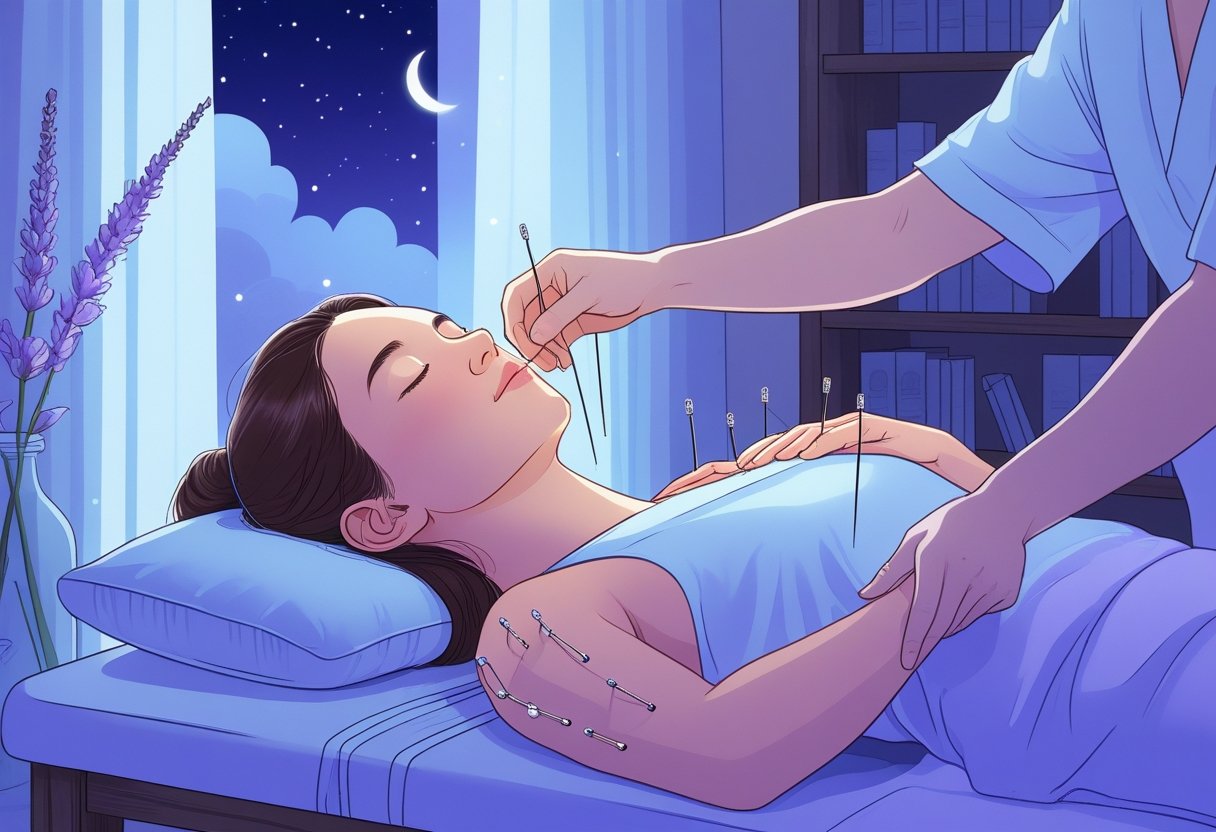
Key Acupuncture Points for Sleep
Certain acupuncture points help improve sleep by calming the mind and reducing stress. These points target insomnia and promote relaxation. Knowing their names, locations, and functions clarifies how they contribute to better sleep.
HT7 Acupuncture Point
The HT7 point, also known as Shenmen or Spirit Gate, ranks among the most recognized acupuncture points for sleep. It sits on the wrist, at the edge of the crease on the little finger side. This point is important in calming the mind and easing anxiety and restlessness.
Stimulating HT7 balances the heart’s energy, which significantly affects emotional health. Many acupuncturists recommend pressing or needling this point to relieve insomnia and enhance sleep quality. It also helps reduce emotional stress, making it especially useful for those whose sleep troubles stem from anxiety or overthinking.
An Mian Point
An Mian, meaning “peaceful sleep”, is a specialized acupuncture point known for directly improving sleep. It lies behind the ear, near the base of the skull where the neck meets the head. This point addresses insomnia by relaxing the nervous system. Applying pressure or acupuncture on An Mian shortens the time needed to fall asleep and deepens overall sleep. Practitioners use it together with other sleep points to boost its calming effects. Since it influences the nervous system, this point suits people who wake or experience restless sleep.
Other Notable Sleep-Related Points
Several additional points support better sleep, including:
- San Yin Jiao (SP6): Located above the ankle, it aids in hormone balance and calms the mind.
- Yin Tang: Found between the eyebrows, it helps relieve stress and encourages relaxation.
- Kidney 1 (K1): Positioned on the sole of the foot, it promotes grounding and calmness.
Each of these points contributes to stress reduction, nervous system calming, or energy balancing. They commonly combine with HT7 and An Mian in treatments for insomnia or other sleep difficulties.
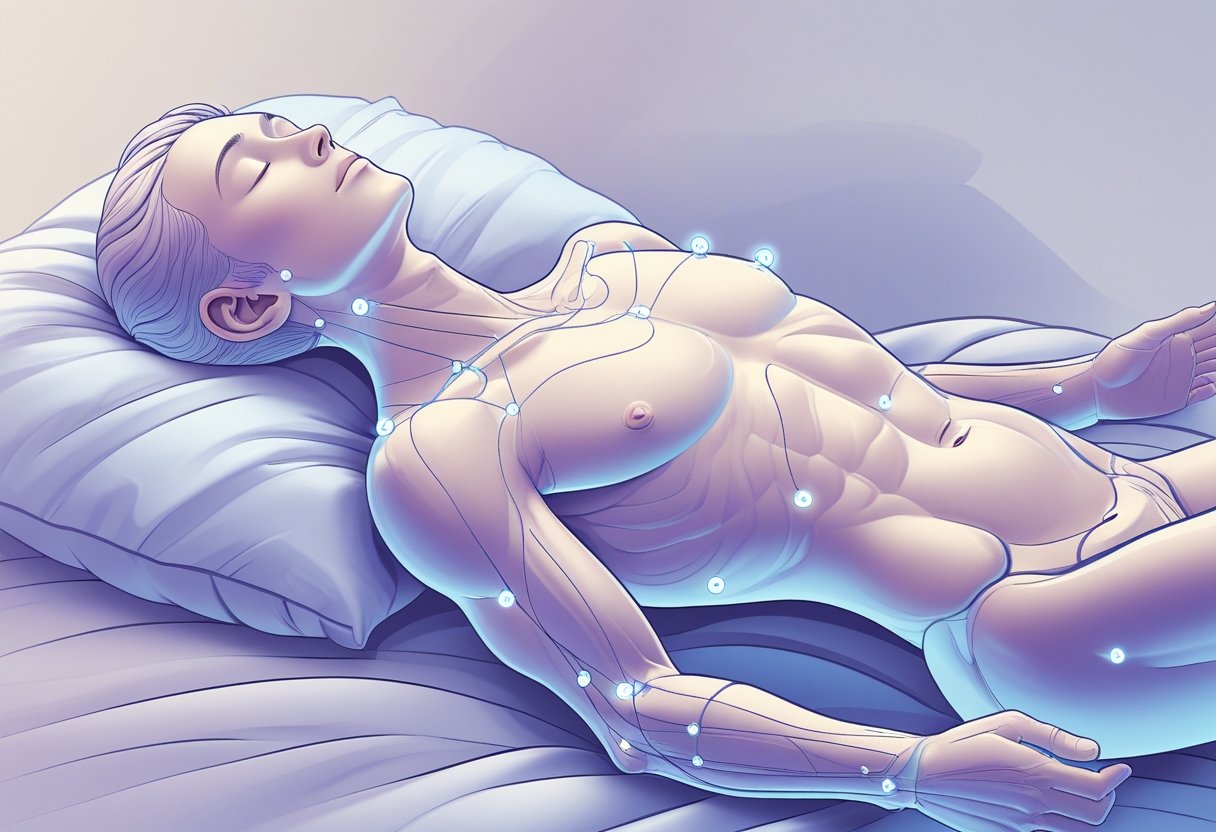
Acupressure for Sleep Improvement
Acupressure uses specific points on the body to reduce tension and promote relaxation. This method targets sleep acupressure points that ease insomnia and support better rest. The practice is non-invasive and can be done at home as part of a regular routine.
Acupressure vs. Acupuncture
Acupressure and acupuncture both stimulate the same sleep acupressure points. The main difference lies in the technique: acupuncture uses thin needles inserted into the skin, whereas acupressure applies firm pressure with fingers or hands. Acupressure requires no special equipment and poses no risk of pain or infection. It improves blood flow and releases muscle tension, which helps address sleep problems such as insomnia.
Acupuncture may deliver deeper or longer-lasting effects, but acupressure serves as a simple, natural way to improve sleep. Many people find that combining both methods yields better results.
How to Perform Acupressure for Sleep
To use acupressure for insomnia, first locate key points such as Yin Tang (between the eyebrows), HT7 (inside the wrist), and An Mian (behind the ear).
Apply gentle, steady pressure using your thumb or index finger. Hold each point for about 2–3 minutes while breathing slowly and deeply. Repeat this 1–2 times daily, especially before bedtime.
Important tips:
- Use moderate pressure, enough to feel some sensation but no pain.
- Combine massaging several points for a stronger effect.
- Practice daily to reduce sleep disturbances effectively.
This practical approach to acupressure can help ease tension and improve sleep quality without medication or complex tools.
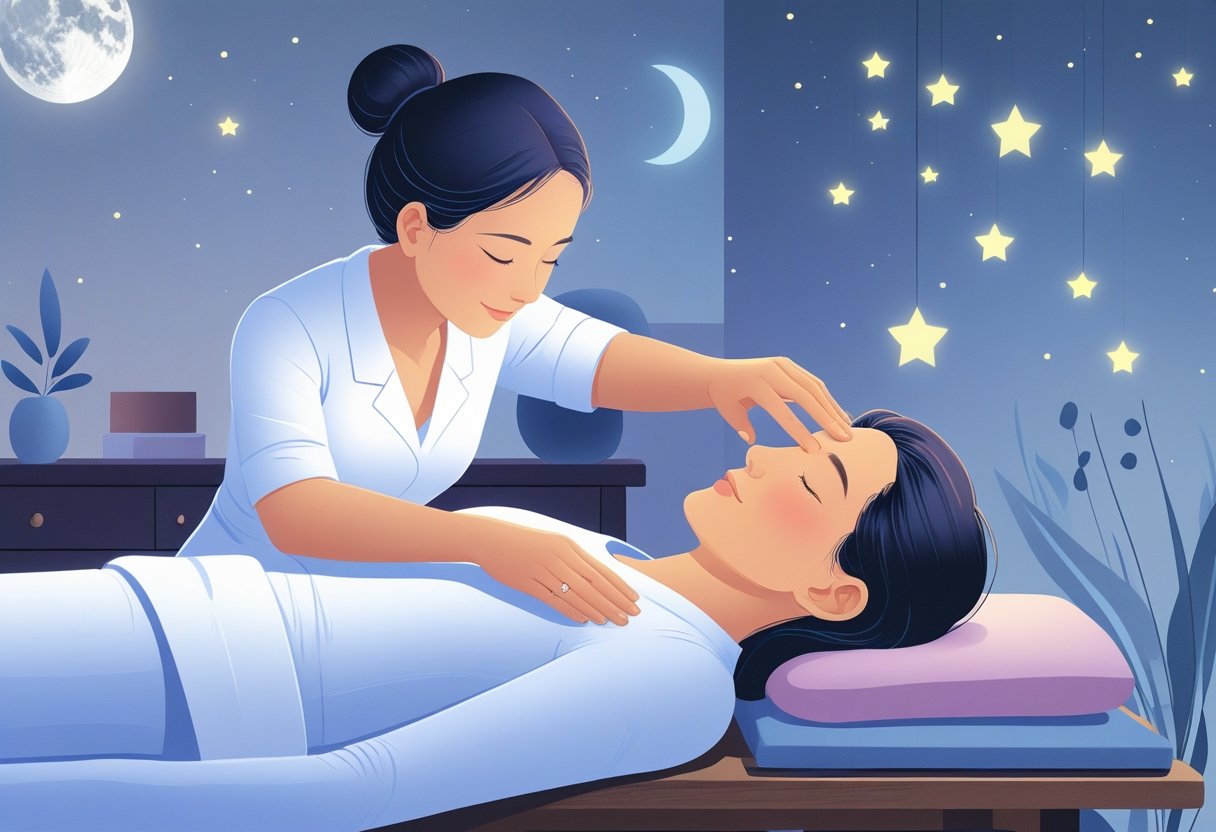
Pressure Points That Promote Sleep
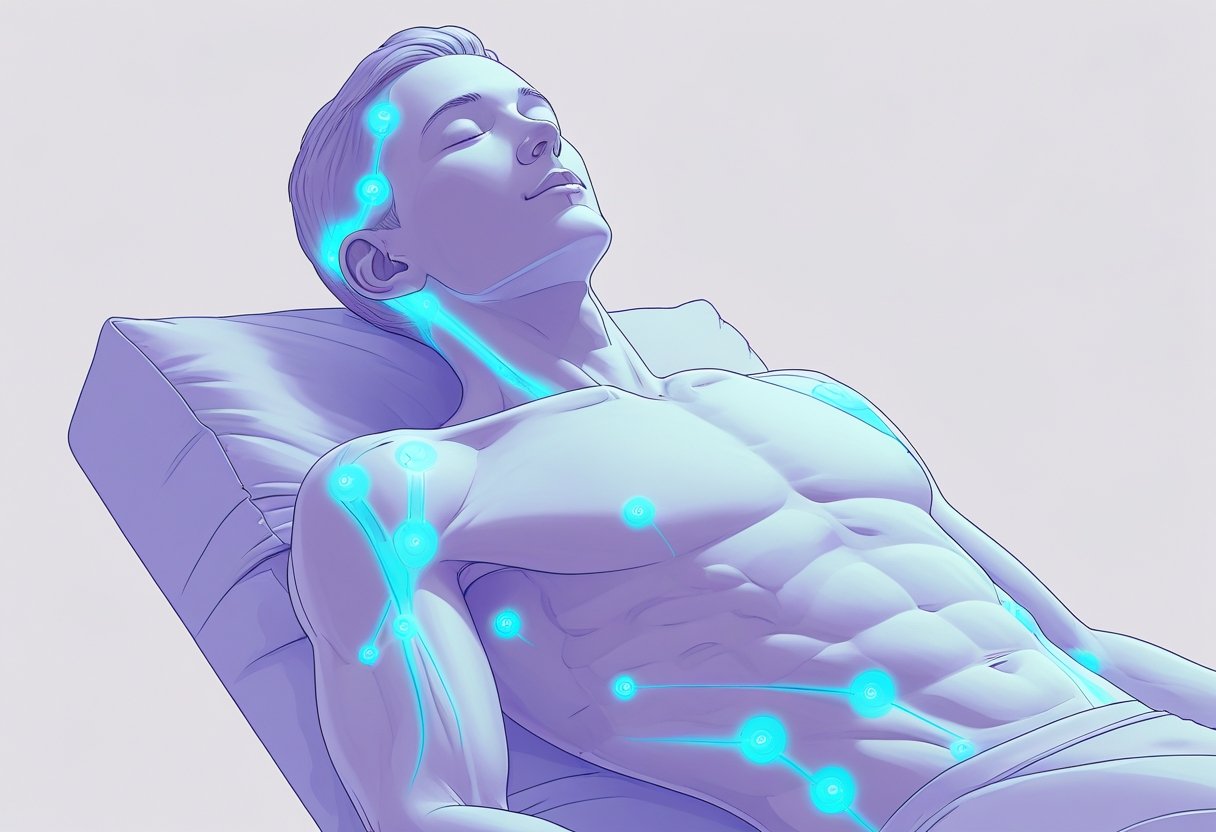
Certain pressure points on the body help improve sleep quality. These points promote relaxation and prepare the mind and body for rest. Applying pressure to points on the hands and feet reduces stress and eases insomnia.
Hand Pressure Point for Sleep
A key pressure point on the hand lies between the thumb and index finger. Applying gentle, steady pressure there eases tension and calms the nervous system. This point is called the “Hegu” or LI4 in acupressure practice.
To stimulate it, press firmly with the opposite thumb for about two minutes while taking deep breaths. This pressure point often relieves headaches and stress, both common barriers to sleep. Another helpful point on the hand is located along the wrist crease near the pinky side. Massaging this spot supports relaxation and improves sleep quality by calming the body’s energy flow.
Foot Pressure Points for Sleep
Several pressure points on the feet link to better sleep. One effective spot lies in the center of the sole. Applying firm pressure here promotes calmness and reduces symptoms of insomnia. Pressure points near the ankles also help. Gentle massage around the inner ankle bone encourages relaxation by easing tension in the lower body.
Regular use of foot pressure points improves circulation and helps the body enter a restful state. These points are easy to locate and stimulate before bedtime, making them practical for better sleep habits.
Pressure Points for Relaxation
Relaxation plays a vital role in falling asleep, and certain pressure points throughout the body assist this process. Points behind the ears and on the forehead relieve stress and quiet the mind. Pressing the temples gently or massaging the base of the skull reduces mental strain. This technique proves especially helpful for those who struggle with racing thoughts at night.
Using a combination of pressure points to induce sleep creates a calming ritual. This method encourages the nervous system to relax, making it easier to fall asleep and stay asleep.
Using Pressure Points: Step-By-Step Guide
Applying pressure points correctly can help promote relaxation and improve sleep quality. Using the right techniques along with clear guidance on the exact locations makes this method effective and easy to follow.
Techniques for Activation
To activate a pressure point, apply firm but gentle pressure with your thumb or finger. Use slow, steady force in a circular motion or press straight down. Each point should receive stimulation for about 1 to 2 minutes on both sides of the body. Avoid pressing too hard, which might cause discomfort. Instead, aim for a mild tension. Breathing slowly and deeply while applying pressure enhances relaxation.
When working on someone else, rhythmic and gentle pressure on points like Liv-3 on the foot or HT7 on the wrist encourages sleepiness. These points help calm the mind and reduce stress. Practicing this regularly supports better sleep habits over time.
Diagrams and Visual Aids
Clear diagrams are important in locating pressure points accurately. For example, the HT7 point lies at the wrist crease near the pinky side. The Yong-quan point sits on the sole, about one-third down from the base of the toes. Visual aids that show exact spots remove guesswork and improve results. Charts with photos, labels, and arrows offer quick reference during practice. Keeping printed or digital images nearby helps ensure proper finger placement.
Knowing the visual layout makes it easier to target points known to ease sleep difficulties, such as those that reduce overthinking or balance energy flow. These aids prove especially helpful for beginners learning how to help someone fall asleep by touching specific points effectively.
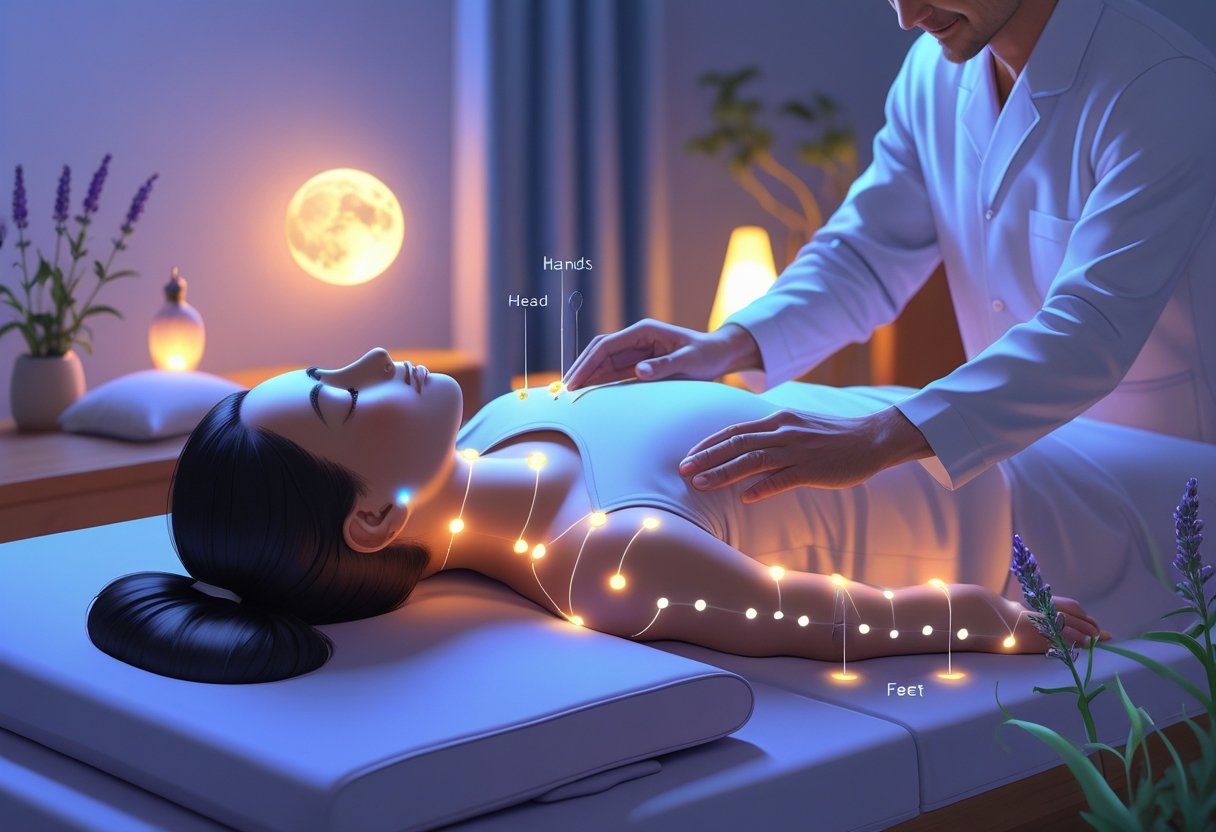
Complementary Lifestyle Tips for Better Sleep
Improving sleep requires more than one approach. Changes in daily habits combined with treatments can lead to noticeable improvements in sleep quality and duration.
Sleep Hygiene Habits
Good sleep hygiene involves consistent bedtime routines and a sleep-friendly environment. Avoid screens at least an hour before bed to reduce exposure to blue light, which interferes with melatonin production. Keeping the bedroom cool, dark, and quiet supports natural sleep cycles. Limiting caffeine and heavy meals close to bedtime also helps. Regular exercise, but not immediately before bed, promotes faster sleep onset and deeper rest. Writing down worries before sleeping may ease stress and calm the mind.
Consistently applying these habits builds a strong foundation for better sleep without medication.
Integrative Approaches With Acupuncture
Combining acupuncture with other natural therapies enhances its effects on sleep. Techniques such as meditation, deep breathing, or gentle yoga before acupuncture sessions tend to increase relaxation and reduce anxiety. Acupuncture aims to balance energy flow and target stress-related issues that disrupt sleep. Combined with lifestyle changes, it addresses both physical and mental barriers to restful sleep.
Many patients find that acupuncture alongside calming practices improves sleep quality and duration more effectively than either method alone. This integrative approach is a drug-free option to support better rest.
How Mattresses and Acupuncture Work Together to Improve Sleep
Acupuncture works by releasing energy blockages in the body and restoring balance to qi. This process can lower stress and ease tension that disrupt sleep.
A quality mattress provides comfortable support, preventing pain and discomfort that interfere with rest. When combined with acupuncture, the effects on physical comfort and energy balance may lead to better sleep quality. The Nolah Signature 12” mattress offers excellent pressure relief and spinal alignment, which is why it is a strong option to complement holistic sleep methods.
The Nolah Signature 12” mattress features a unique foam design that reduces pressure points and promotes airflow, which helps keep the sleeper cool and comfortable through the night. Its medium-firm feel suits different sleep positions and supports the body where it needs it most without sacrificing softness.
Both approaches address different causes of sleep issues. Acupuncture targets the body’s internal balance, while a mattress addresses external factors like pressure points and support.
Benefits of combining acupuncture and a quality mattress:
- Reduced muscle tension and pain
- Improved circulation and relaxation
- Better spinal alignment
- Enhanced ability to fall asleep and stay asleep
Practicing good sleep hygiene, such as maintaining a consistent schedule and ensuring a cool, dark environment, helps reinforce these benefits. Together, acupuncture and a supportive mattress create a practical way to improve sleep without relying solely on medication.
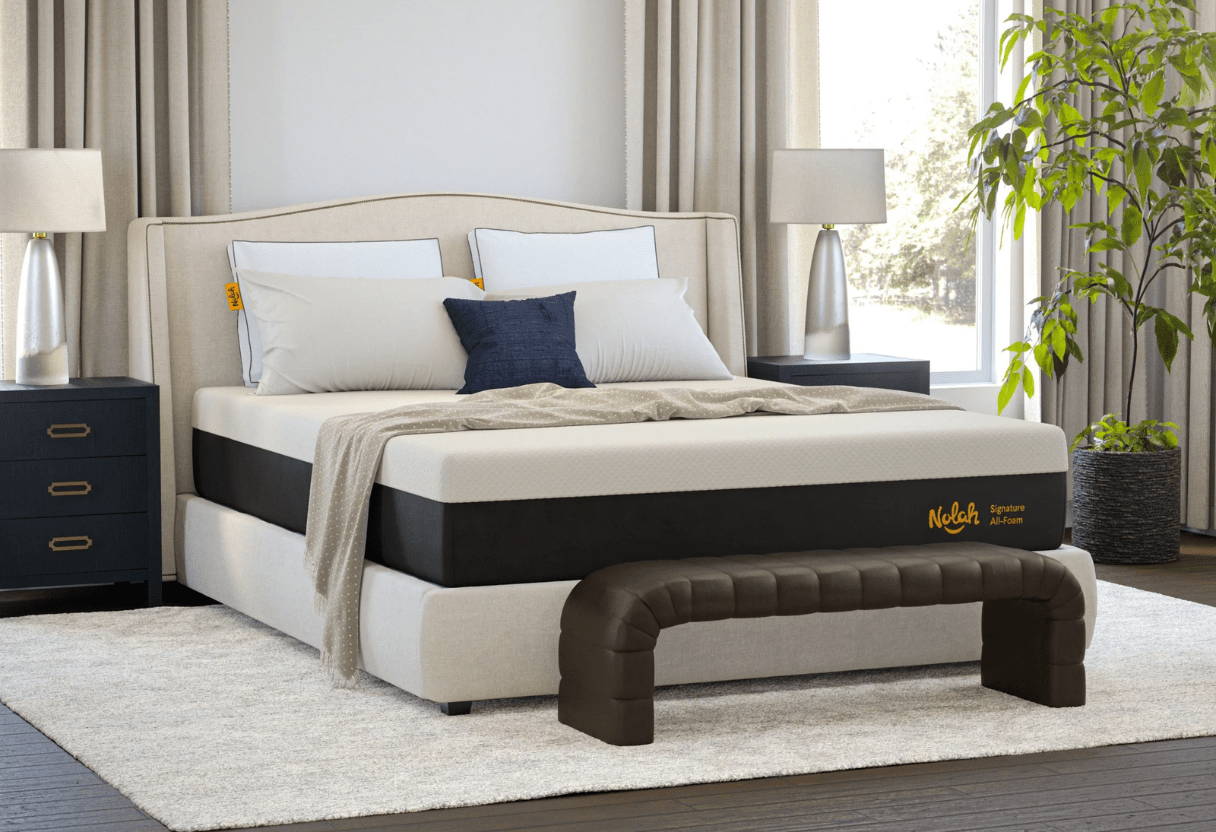
Frequently Asked Questions
Acupuncture for sleep targets specific points to reduce insomnia and related stress. The number of sessions, targeted points, and overall effectiveness depend on the individual. Many also turn to acupuncture to ease anxiety that affects sleep quality.

